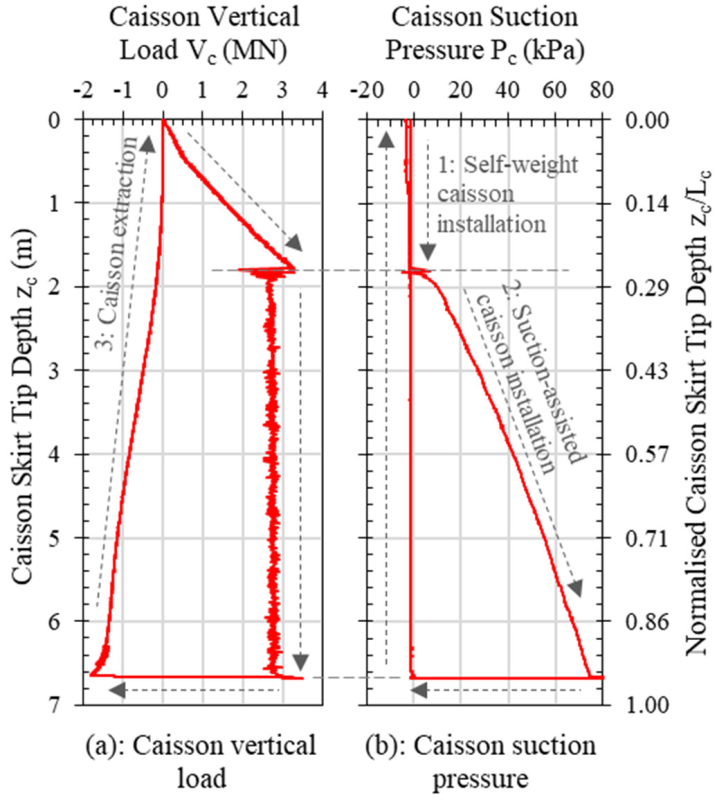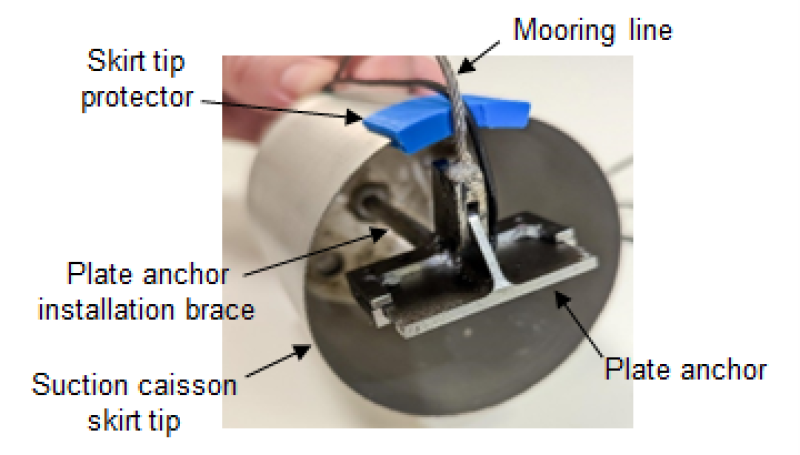Using suction embedded plate anchors (SEPLAs) for floating wind applications in sand
Project Overview
This pilot study investigated if suction embedded plate anchors (SEPLAs) could be installed in seabed types other than clays. Experiments performed in dense sand using the 3.6 m diameter beam centrifuge showed that a suction caisson can be used to install a plate anchor, and that the capacity mobilisation response of the plate anchor is unaffected by the installation process.


Challenge & Solution
Commercial-scale floating offshore wind farms will require hundred of anchors to secure the wind turbines to the seafloor. The challenge is to improve the economics of floating offshore wind developments through the use of smaller, more efficient anchors that can be installed in a variety of seabed types using smaller vessels that are more available at lower day-rates.
Plate anchors represent an attractive solution, provided that they can be installed to a known depth and at a controlled location in a variety of seabed types.
Our Process
SEPLA experiments were conducted in dense silica sand using a suction caisson with a length to diameter ratio of 1 and a rectangular plate anchor. The SEPLA was installed using a combination of self-weight and pumping, with variations on the suction caisson weight and plate location modelled to explore the likely caisson size needed for installation.
